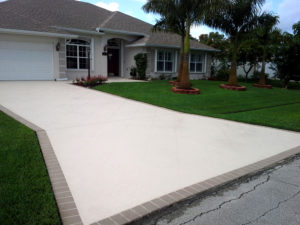Cement vs. Concrete vs. Mortar
 In the construction world, the terms cement, concrete, and mortar are often used. They can be confusing to beginning builders, and maybe be used interchangeably. The basic difference is that cement is a fine binding powder (and in which is never used alone), concrete is composed of cement, sand, and gravel whereas mortar is composed of cement and sand.
In the construction world, the terms cement, concrete, and mortar are often used. They can be confusing to beginning builders, and maybe be used interchangeably. The basic difference is that cement is a fine binding powder (and in which is never used alone), concrete is composed of cement, sand, and gravel whereas mortar is composed of cement and sand.
Apart from the differences in their composition, they have vastly different uses. Even tradespeople who work with these materials daily can colloquially confuse these terms since cement is frequently used to mean concrete. Herewith are further explanation of cement, concrete, and mortar.
Cement
Cement is a binder and it can’t be used alone. The purpose of cement is to hold the other materials together. In the construction, cement is the binding element in both concrete and mortar. Cement is made most commonly of limestone, clay, shells, silica sand and other materials. These materials are crushed and then combined with other ingredients (including iron ore), and then heated to about 2,700 Fahrenheit. This material, called Clinker, is ground
into a fine powder.
It often that cement referred to as Portland cement. The reason is that it was first made in the 1800s in England by a mason, Joseph Aspdin of Leeds, who likened the color to the stone from the quarries on the island of Portland off the coast of England. Today, Portland cement remains the most common cement used. It is a type of “hydraulic” cement, which simply means that it will set and harden when combined with water.
Concrete
Concrete is composed of cement, water and composite aggregate (such as sand, and gravel or other fine and coarse aggregate). The addition of water activates the cement, which is the element responsible for binding the mix together to form one solid object. The aggregate gives the concrete its mass. There are various ways the mix composition of the concrete. Generally, the different mix has different strength, resistance to freeze and thaw, workability and how long it takes to become finish concrete. Ready-made concrete mixes in bags that combine cement, sand, and gravel is also commonly sold so that all needed to do is adding water.
Concrete is commonly used across the world as a strong foundation and infrastructure for almost any type of building. Its unique characteristic is that it starts out as a simple, dry mixture, becomes a liquid, flexible material capable of forming into any mold or shape, and ends up as the hard-as- rock material we know as concrete. As concrete is a mixture of sand, cement, and water, but it also contains rock chippings or gravel, makes it much stronger and more durable. Because it needs a low water to cement ratio, it is much thinner when mixed, making it difficult to use as a bonding element. Concrete is used in structural projects and is often reinforced with steel rebar to maintain its structural integrity as the soil beneath it settles. It is best used for support, such as beams, walls, or other building foundations.
Mortar
Mortar is composed of cement, water, and sand. When water is mixed in with this product, the cement is activated. Mortar is used to hold together bricks, stones or other such hardscape components. The basic composition of mortar might seem similar to concrete, but what really sets it apart is how it is used. Made of a mixture of sand, a binder, and water, mortar is used to hold components together. Depending on the type of mortar using, the binder might be
cement or lime. Either way, mortar is the frosting of construction. Like frosting holding the layers of a cake together, mortar joins the layers of stone or brick together and keeps everything from sliding around. Mortar is used to hold building materials such as brick or stone together. The water is used to hydrate the cement and hold the mix together. The water to cement ratio is higher in the mortar than in concrete in order to form its bonding element. When mixed, it is a much thicker substance than concrete, making it ideal as a glue for building materials like brick. Because mortar must be replaced every 25-50 years, it isn’t practical for structural projects.
Contact us
 Phone Call |
 Text Message |
 |







